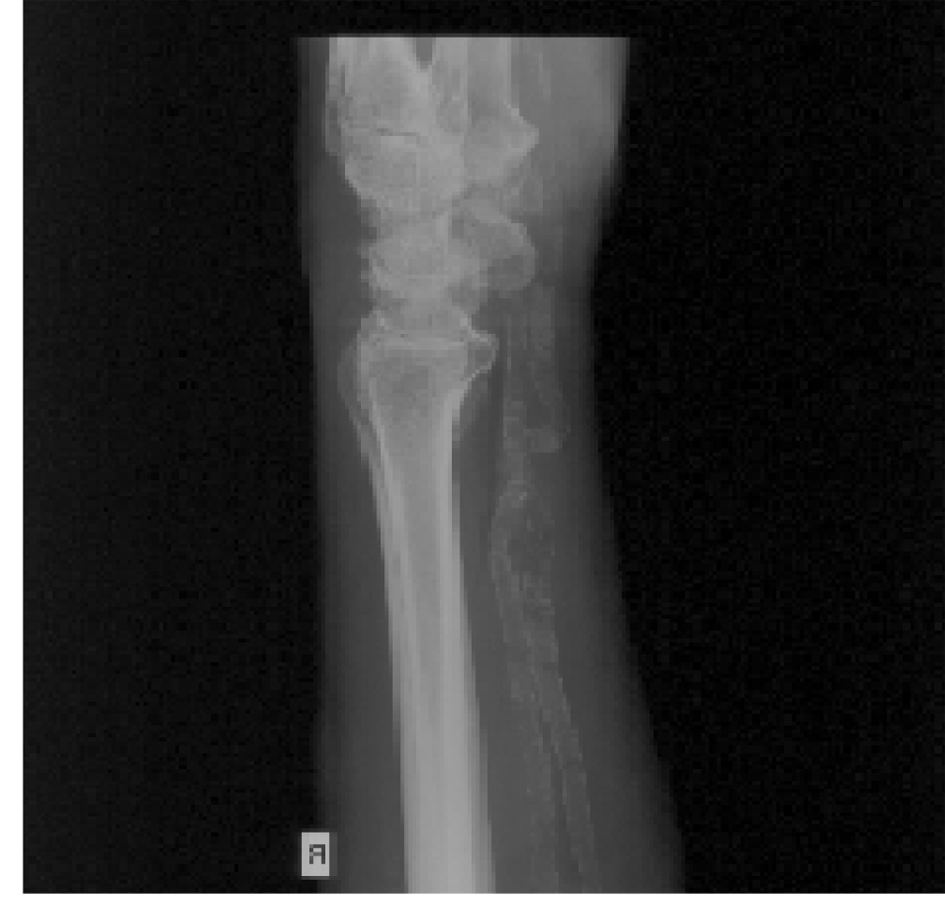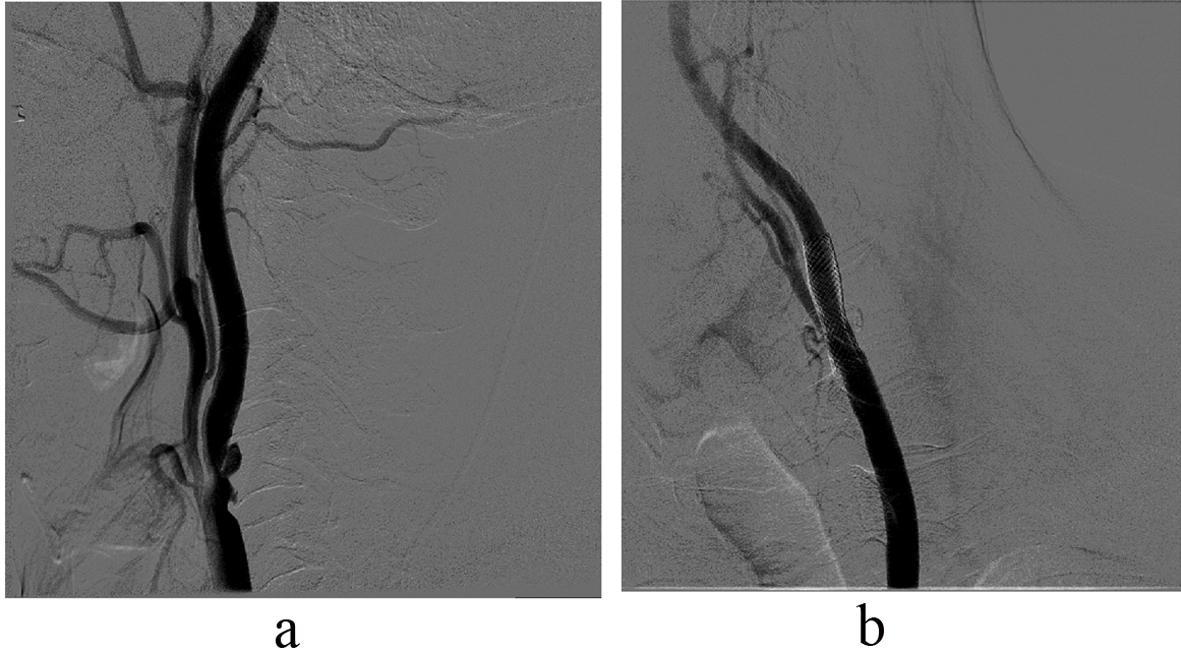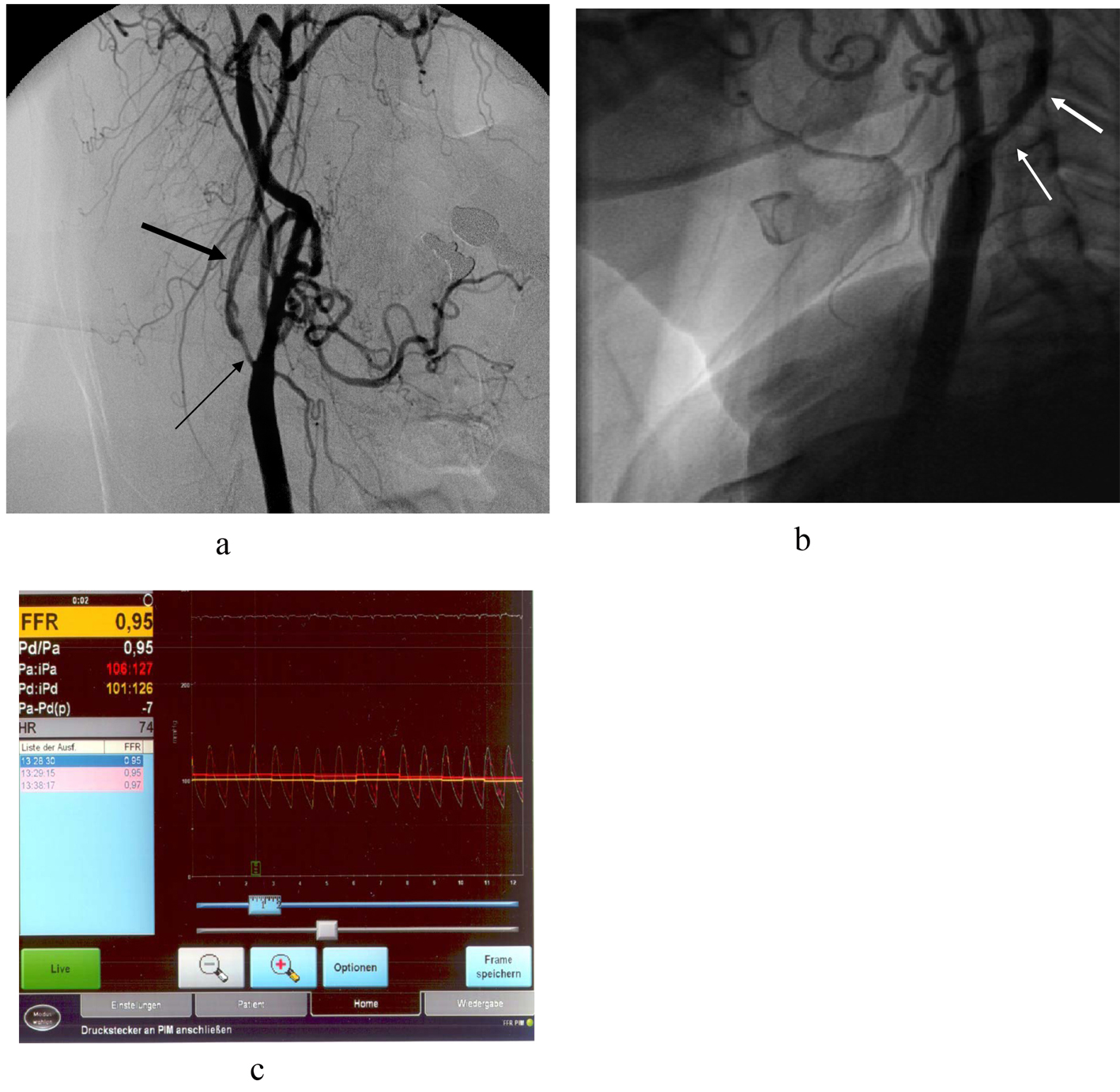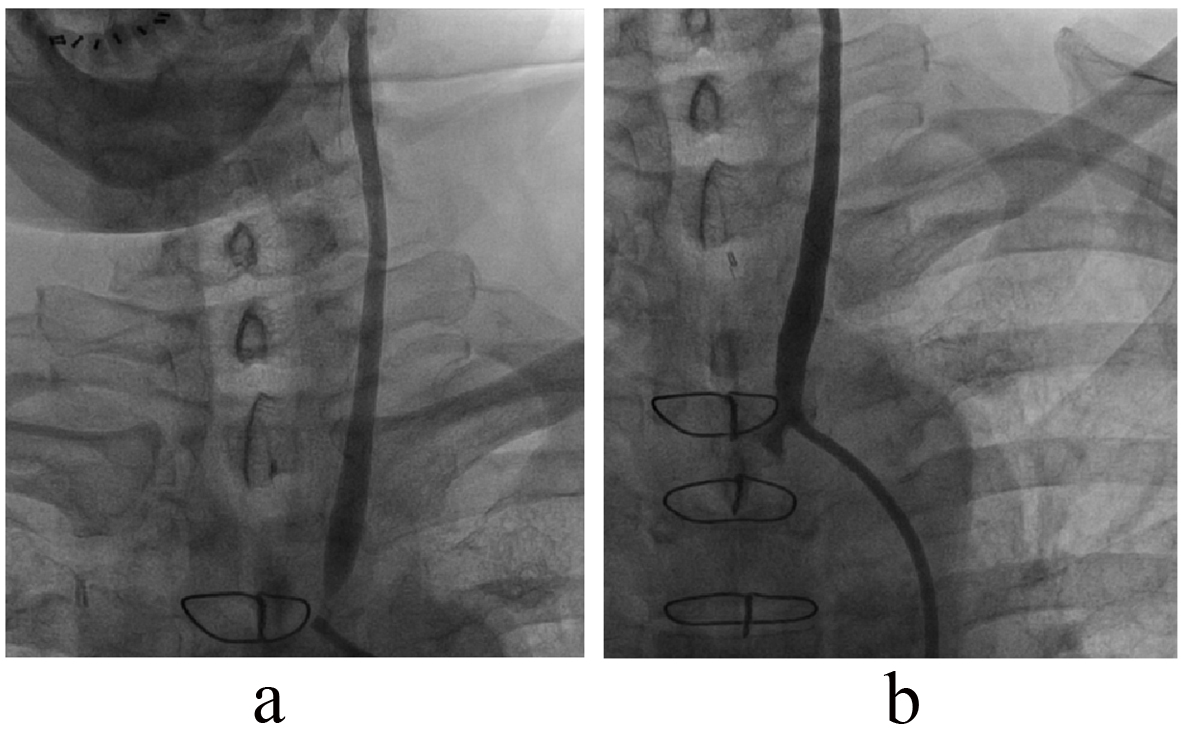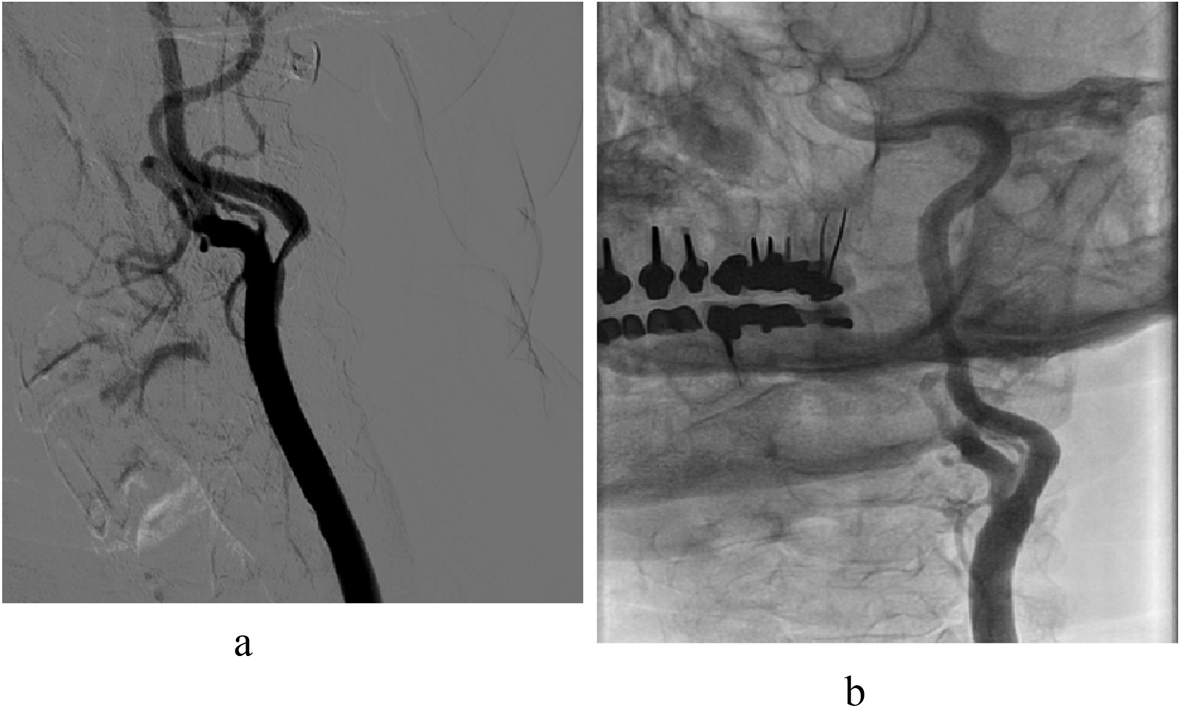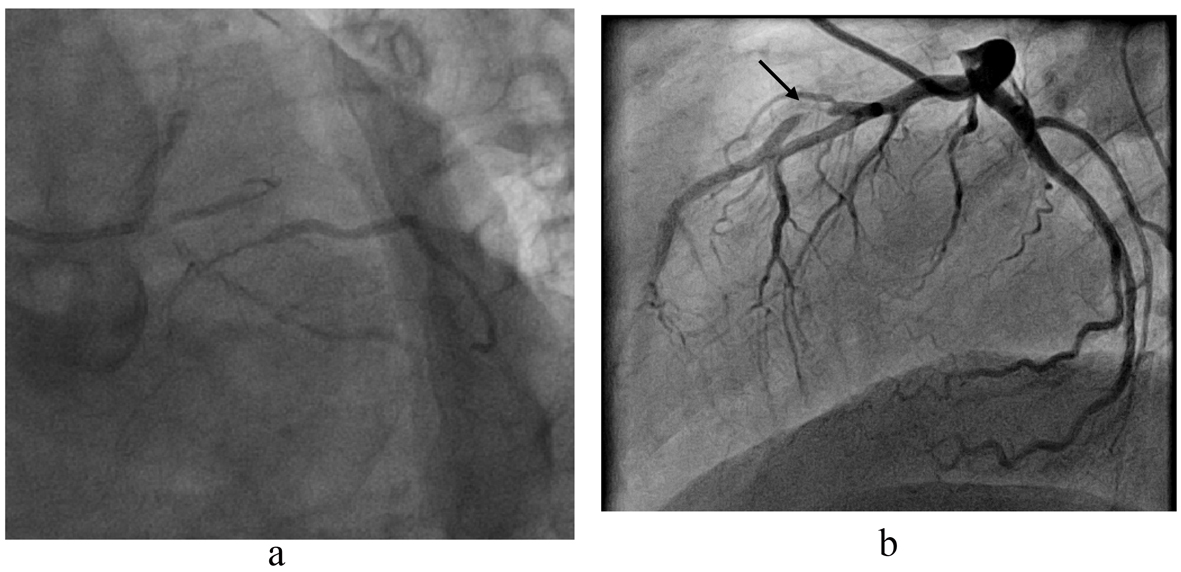
Figure 1. (a). Common sense analogy from coronary artery revascularisation strategies. Not many sane interventional cardiologists would advocate primary percutaneous treatment for this symptomatic severe left main, left anterior descending, circumflex and intermediate coronary lesion with a collateralised periphery from the right coronary artery. On the other hand, only a few cardiac surgeons would seriously advise bypass grafting as first line treatment for the focal, single vessel lesion depicted in (b).
